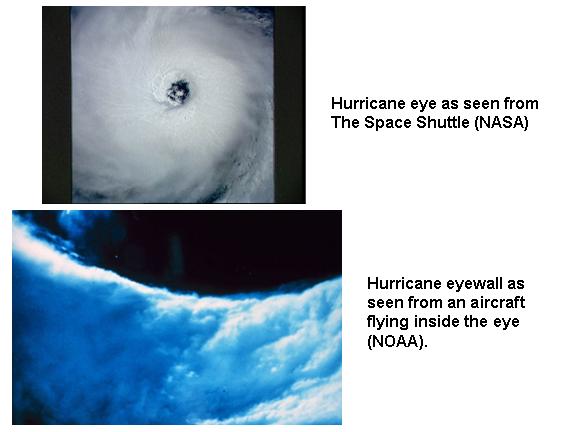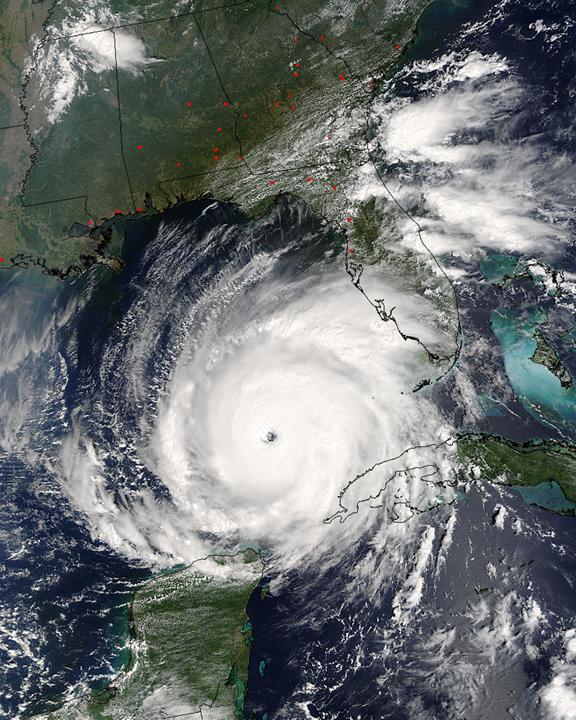
CAUSES
OF HURRICANES
Hurricanes are intense low pressure areas that form over warm ocean waters in the summer and early fall. Their source of energy is water vapor which is evaporated from the ocean surface. Water vapor is the "fuel" for the hurricanes because it releases the "latent heat of condensation" when it condenses to form clouds and rain, warming the surrounding air. ( This head energy was absorbed by the water vapor when it is evaporated from the warm ocean surface, cooling the ocean in the process.) Usually, the heat released in this way in tropical thunderstorms is carried away by wind shear, which blows the top off the thunderstorms. But when there is little wind shear, this heat can build up, causing low pressure to form. The low pressure causes wind to being to spiral inward toward the center of the low. These winds help to evaporate even more water vapor from the ocean, spiraling inward toward the center, feeding more showers and thunderstorms, and warming the upper atmosphere still more. The showers and thunderstorms where all of this energy is released are usually organized into bands (sometimes called "rainbands" or "feeder bands"), as well as into an "eyewall" encircling the center of the storm. The eyewall is where the strongest winds occur, which encircle the warmest air, in the eye of the hurricane. This warmth in the eye is produced by sinking air, which sinks in response to rising air in the thunderstorms. The winds diminish rapidly moving from the eyewall to the inside of the relatively cloud-free eye, where calm winds can exist.

The 10 BIGGEST Hurricanes From 1900-2000
1. Unnamed storm, which hit the Florida Keys in 1935. Category 5
2. Camille, which hit Mississippi, Louisiana and Virginia in 1969. Category 5
3. Andrew, which hit Florida and Louisiana in 1992. Category 5
4. Unnamed storm, which hit the Florida Keys and Texas in 1919. Category 4
5. Unnamed storm that hit Lake Okeechobee, Florida, in 1928. Category 4
6. Donna, which hit Florida and the Eastern U.S. in 1960. Category 4
7. Unnamed storm, which hit Galveston, Texas, in 1900. Category 4
8. Unnamed storm, which hit Grand Isle, Louisiana, in 1909. Category 4
9. Unnamed storm, which hit New Orleans, Louisiana, in 1915. Category 4
10. Carla, which hit Texas in 1961. Category 4
Hurricanes are classified into five categories, based on their wind speeds and potential to cause damage
* Category One -- Winds 74-95 miles per hour
* Category Two -- Winds 96-110 miles per hour
* Category Three -- Winds 111-130 miles per hour
* Category Four -- Winds 131-155 miles per hour
* Category Five -- Winds greater than 155 miles per hour
In the United States, the official hurricane season is from June 1 to November 30, but hurricanes can happen any time of the year. Hurricanes are named by the National Weather Service. Some past hurricanes have been named: Opal, Andrew, Marilyn, Hugo and Fran.
